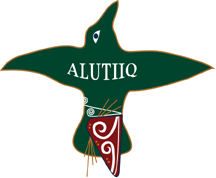 Building Bridges for Student Success Building Bridges for Student Success
Engaging Kodiak's Students and Communities Through Place-Based Educational Practices Chapter
IV - Conclusion
Public schools have been in reform from their beginnings. Schools
must have high expectations of their students, believing that each one of
them is an intelligent, capable learner who brings with them a unique experience
of the world. Through an approach to teaching and curriculum that is rooted
in the place in which our children live, our schools are able to make learning
relevant. In doing so, our children will be better prepared to be contributing
inhabitants of our community, living well ecologically, politically, economically,
and spiritually (Orr, 1998). Haas and Nachtigal say it well in their book,
Place Value (1998):
"
...schools have become vehicles for educating people to leave, fulfilling
the prophecy that these places are doomed to poverty, decline, and despair..
.Awareness
of local things disappears in the crush of standardized curricula, generic
textbooks, and centralized test design.. .When schools are disconnected
from specific places and life in communities, they cease to be public institutions,
serving the public good. Alternatively, by developing a healthy respect for
the
physical and social communities they inhabit, schools can teach children to
be contributing
citizens, no matter where the students end up living their lives, earning
their living, and practicing democracy" (p. 5).
It is the educator's
job to do their part in guiding children to attain those skills that are
necessary to be successful in the world of the student
and show how they also reflect academic standards that our District mandates.
In life outside of school, the standardized tests are insignificant in
light of what children need to be like and what they must know and be able
to do.
Keeping our curriculum grounded through place-based educational practices
that are carefully designed to provide reflective thinking and active learning
with
high expectations, we will be preparing our children for life. Table of Contents
|